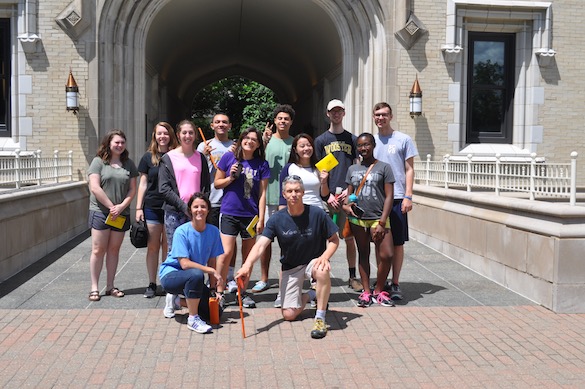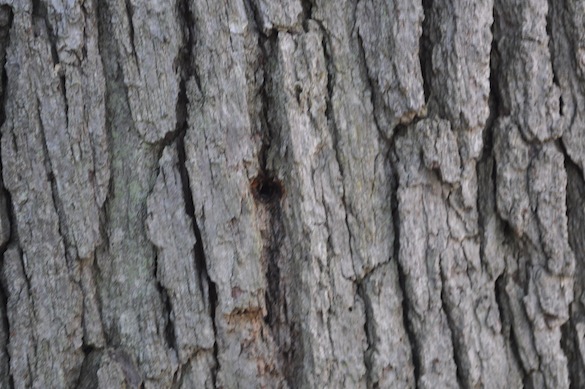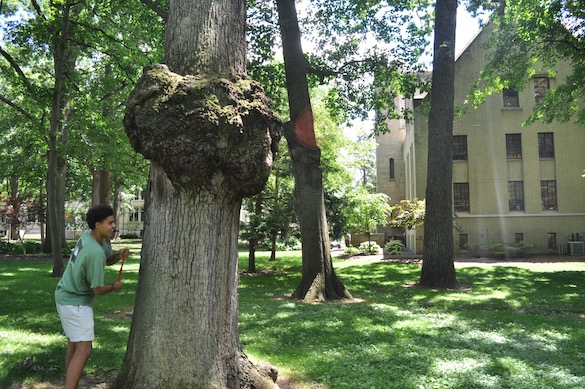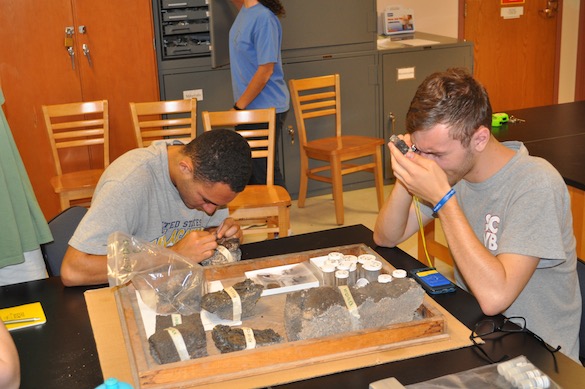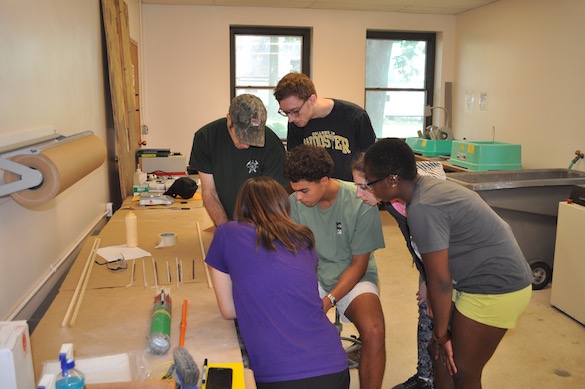Day one involved team Alaska hiking the East Glacier Trail led by Brian Buma, a forest ecologist from the University of Alaska Southeast. Their goal was to sample yellow-cedar trees at high elevation sites and understand how the dynamics of the forest relate to climate change. The trip was off the beaten path after 2 miles and continued for another 6 miles through a steep, muddy, dense understory. The group only stopped to eat lunch, but it was a sublime day with amazing company. Upwards of 50 samples were collected from a boggy environment, known as a “muskeg”. After a very long but exciting day the group headed down the trail for home-cooked fish tacos. Yum!
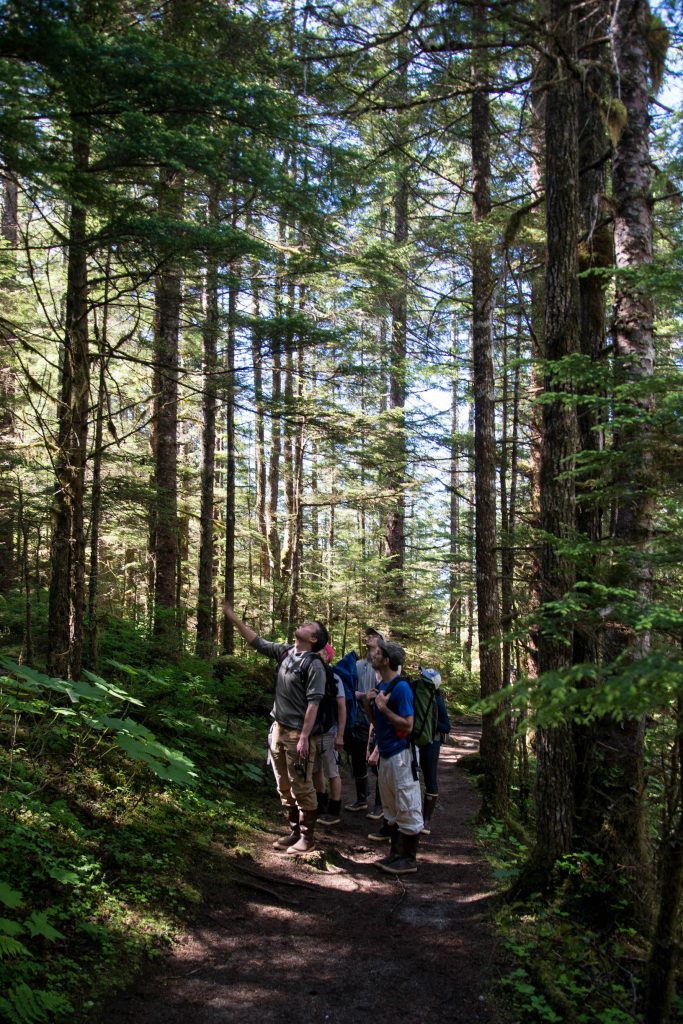
Brian Buma, forest ecologist, gives the group information regarding adolescent cedar trees.
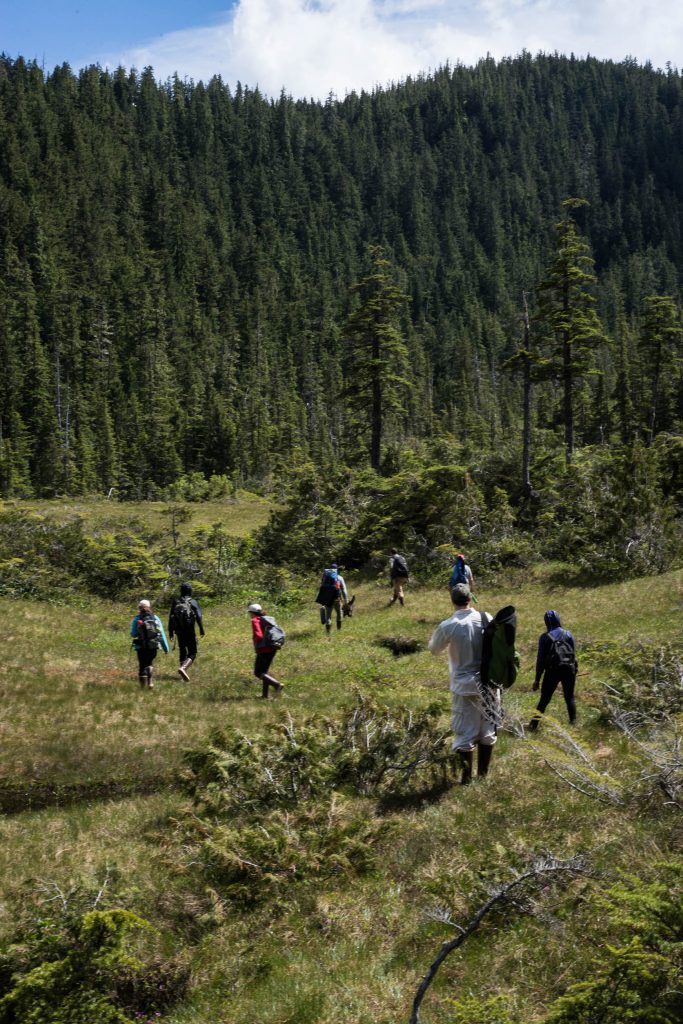
The group treks through the unknown terrain, they may be lost.

After realizing they were not actually lost Team Alaska catches their breath and admires the views atop the mountain.

Chris measures the DBH, diameter at breast height, to assist Brian Bumas’ study of these economically, culturally, and ecologically important trees.
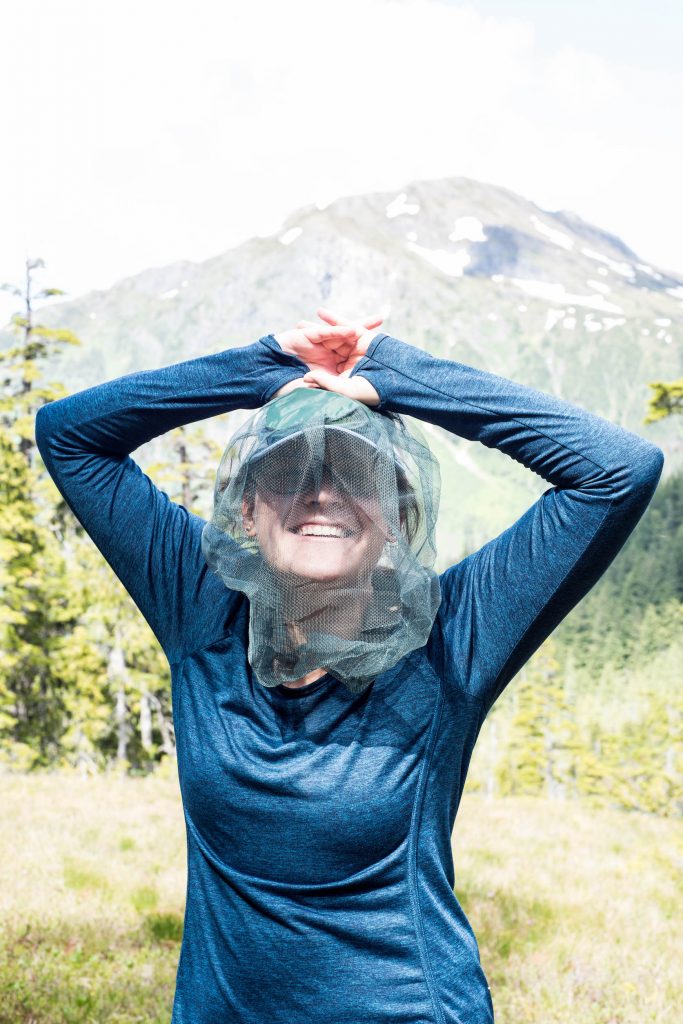
Alora stands in the foreground to upstage the natural beauty of the mountain, it is possible to look good in a bug net!
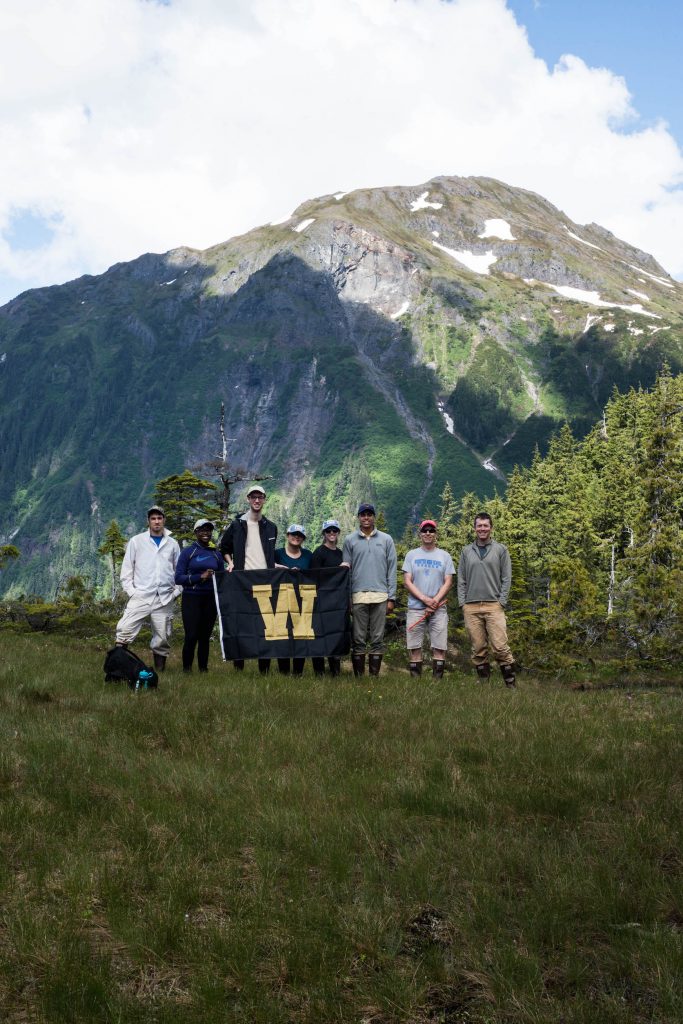
Team Alaska poses for a quick photo-op before starting their fieldwork.

Josh, member of Team Alaska, reads his field notes and records data.
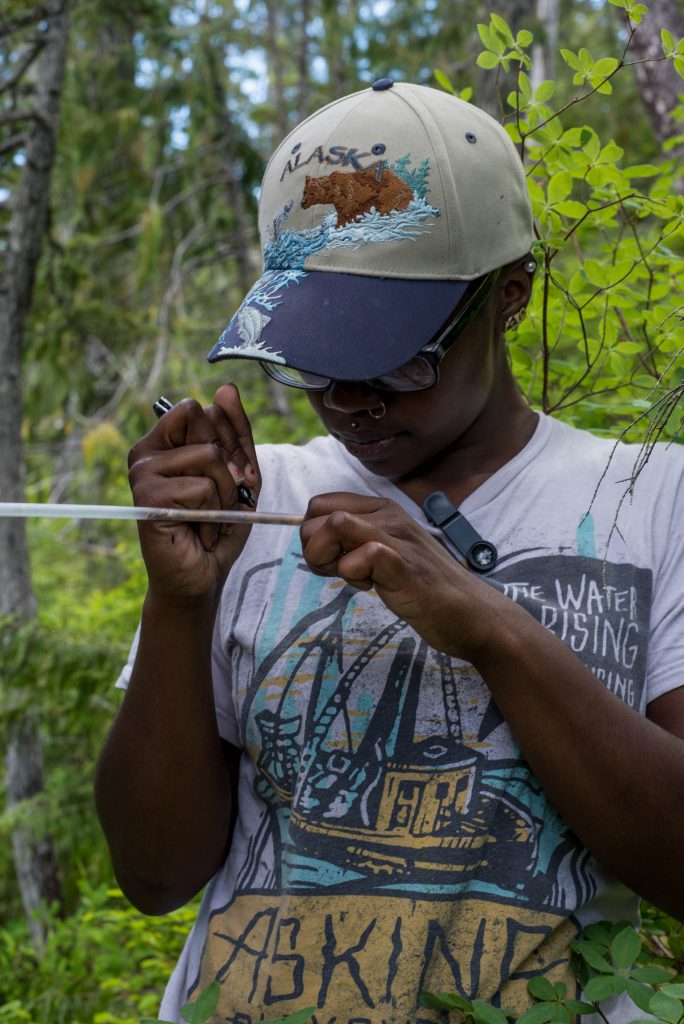
Kerensa labels a straw, containing a yellow-cedar tree core for future analysis.
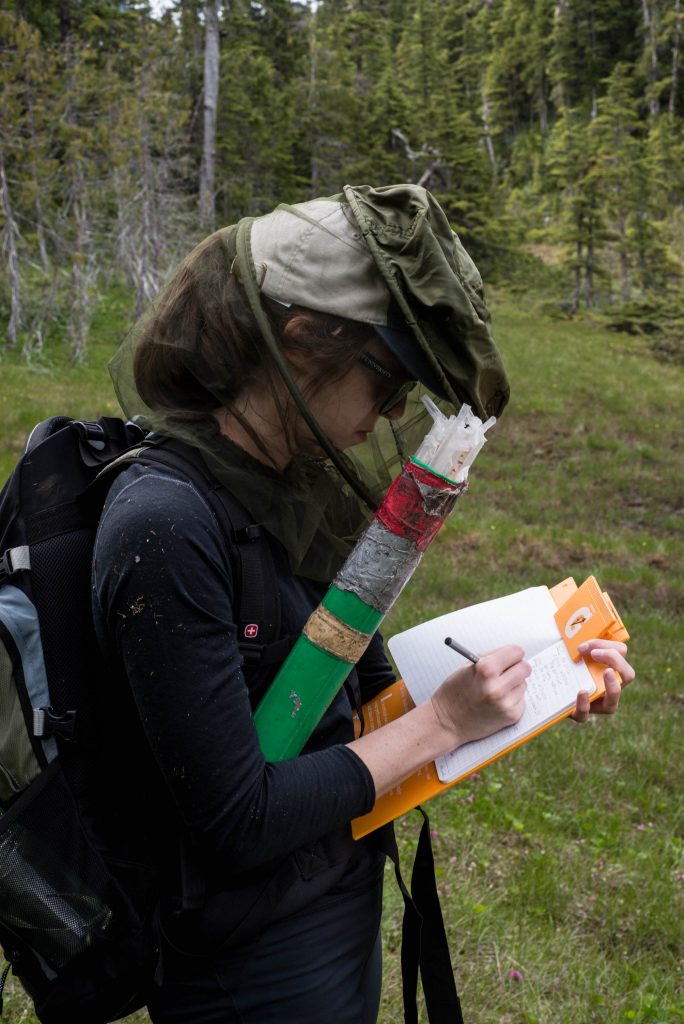
Malisse, renowned multi-tasker, records field notes, holds cedar cores and protects herself from the hordes of insects trying to sample her blood. Thanks to Jesse Wiles for the photographs.



